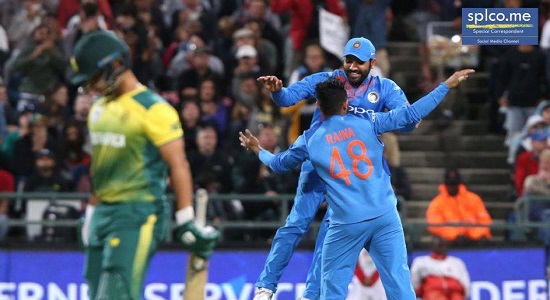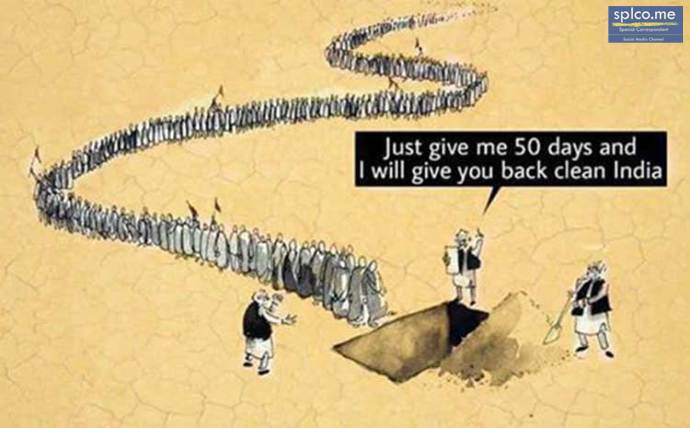India sealed the T20 series against South Africa with a victory in the decider that was almost snatched away from them by a feisty South African lower-order effort.

South Africa were asked to pull off the second-highest successful chase at Newlands and then fell so far behind the required run-rate that they needed 59 runs off 21 balls.
Then, debutant Christiaan Jonker and old-hand Farhaan Behardien plundered 51 runs in the last three-and-a-half overs but could not get the hosts over the line.
South Africa were 114 for 5 in the 17th when Behardien joined Jonker. If Jonker was nervous, he didn't show it. He took 18 runs off Shardul Thakur's final over to reconstruct his figures of 3-0-17-1 into 4-0-35-1 and leave South Africa with 35 to win off the final two overs.
Together, Behardien and Jonker scored 16 runs off Jasprit Bumrah and needed 19 off the last over and 12 off the last three balls but the mistakes their team-mates had made earlier were too big to rectify.
A slow start - South Africa were 25 for 1 after the Powerplay and 52 for 2 after 10 overs - on top of a clumsy fielding effort left South Africa so close, yet so far from the win that would answered some of the questions about their depth and their ability to handle pressure.
Shikhar Dhawan was India's top scorer but only fortuitously so because South Africa, in the form of Tabraiz Shamsi, let him off twice. Dhawan was on 9, and India 54 for 1 in the sixth over, when he cut a Chris Morris ball to short third man, where all Shamsi had to do was accept, but he was unstable as the ball popped out of his hands.
Seven overs and 49 runs later, Dhawan, who was on 34, top-edged Aaron Phangiso to Shami at short fine leg. Shamsi ran back but reprieved Dhawan again. Between the two chances, Dhawan found the boundary for the first time, off the 29th ball he faced, delivered by none other than Shamsi.
But, Shamsi also saw some success in that period. Suresh Raina, who had announced himself with a six off Junior Dala, tucked into Andile Phehlukwayo's first two balls and taken boundaries off short balls from Morris and JP Duminy, eventually holed out off Shamsi for a feisty 43. It was not Raina's dismissal, but Manish Pandey's that allowed South Africa to pull India back.
Pandey hit his one meaty six off Shamsi and then tried to do the same off Dala, who returned in the 14th over and immediately banged in a short ball. Pandey could not control the pull and was caught at long-on. In addition to the wicket, Dala only conceded six runs in that over, none in boundaries, and Phehlukwayo followed up with an eight-run boundary-less over of his own. That was enough to create some pressure and Dhawan was run-out off the first ball of the over that followed.
He hoicked a Shamsi delivery to deep midwicket, where Dala was stationed. A single was on, but Dhawan wanted a double and Dala effected a direct hit before Dhawan could complete his return to the striker's end.
At the end of 17 overs, India were 136 for 4, and had only scored 25 runs in the previous four overs. Instead of turning to Phangiso, who had kept things tight, Duminy opted for Morris, who conceded 21 runs in his last two overs, though he did also take two wickets. Still, India would have been satisfied especially with the way their attack started.
South Africa were kept quiet early on and in-form Reeza Hendricks was dismissed by a Bhuvneshwar Kumar knuckle ball, a variation India's seamers sprinkled liberally in their spells. David Miller started to find his touch with Duminy at the other end but before he could hit full flow, gifted a catch to Axar Patel at deep midwicket.
The asking rate when Miller was dismissed was almost 12 runs an over, and Duminy had to accelerate. He found his first boundary off the 20th ball he faced, the delivery after Miller had fallen, and hit back-to-back sixes off Axar. He reached his fifty off 38 balls with a gorgeous cover drive but three balls later top-edged a Thakur slower ball to mid-off and South Africa's hopes all but went with him. However, Jonker and Behardien mounted some fight but India had that little bit more.














